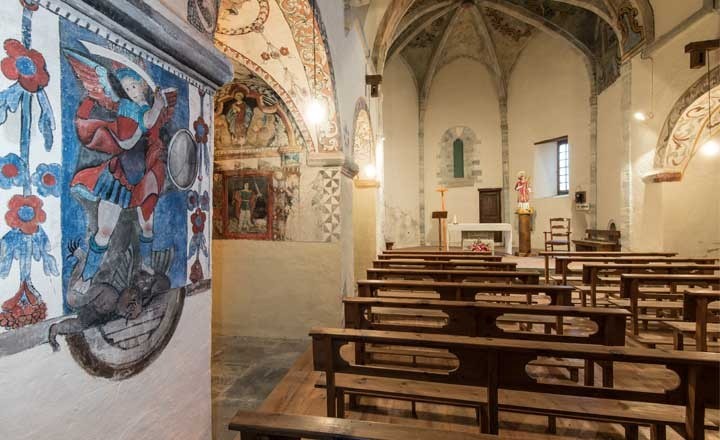

Despite its Romanesque origins, the church of Sant Estèue also incorporates the artistic legacy of the Gothic and Baroque periods. But the first thing the visitor will sense on entering the church is its popular spirit, particularly noticeable in the 18th-Century murals, which have recently been restored.
The central section of the nave and the baptismal font remain as testament to the Romanesque period. As early as the 15th century, the church of Sant Estèue experienced its first major transformation, when a polygonal Gothic apse was added, replacing the original Romanesque one. The magnificence of the Gothic apse can best be appreciated inside the church, where its architectural structure is made plain in the soaring, elegant ribs that rise up from the floor and join in the dome that crowns the apse. Later, during the Baroque period, five side chapels were added to the nave, defining the church’s modern-day appearance. Murals in the chapels illustrate stories from the Bible, and this is where the popular spirit mentioned above can be felt. Continuing in the 18th Century, the bell tower was built on to the apse, as was the entrance portico. Embedded in the facade of this portico are Roman cippus and a Chrismon.
